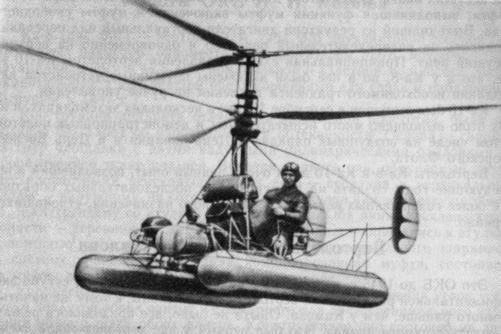Top speed 90 km/h First flight 1949 | Length 3.7 m Manufacturer Kamov | |
 | ||
Kamov ka 10 to ka 50 part 2
The Kamov Ka-10 (NATO reporting name Hat) was a Soviet single-seat observation helicopter that first flew in 1949.
Contents
- Kamov ka 10 to ka 50 part 2
- Kamov ka 10 to ka 50 part 5
- Design and development
- Operational history
- Variants
- Operators
- Specifications
- References
Kamov ka 10 to ka 50 part 5
Design and development
The Ka 10 was a development of Nikolay Kamov's earlier Ka-8, which had been successful enough to allow Kamov to set up his own OKB (design bureau) in 1948. The Ka-10 was of similar layout to the Ka-8, with an open steel-tube structure carrying an engine, a pilot's seat and two three-bladed coaxial rotors. It was larger, however, with a revised transmission and rotor hub design, and a new engine specially designed for the helicopter, the 41 kilowatts (55 hp) Ivchenko AI-4 flat-four.
Operational history
The Ka-10 made its maiden flight in September 1949. Three more prototypes followed, which were evaluated by Soviet Naval Aviation. A Ka-10 was displayed at the 1950 Tushino Air Display, and one made the first landing by a Soviet helicopter on the deck of a ship on 7 December 1950.
In 1954, 12 of an improved version, the Ka-10M were built for the Maritime Border Troops. They had a twin tail rather than the single vertical fin of the Ka-10 and modified rotors and control systems.
Variants
Operators
Specifications
Data from The Osprey Encyclopedia of Russian Aircraft 1875–1995
General characteristics
Performance
